- Best Smite Gods For Beginners - February 10, 2023
- Smite x Runescape Crossover - December 26, 2022
- Overwatch 2 Review - October 27, 2022
Heroes of the Storm is one of many free-to-play MOBAs (multiplayer online battle arenas) out there right now, developed by Blizzard Entertainment. The playable heroes come from Blizzard’s other games, namely World of Warcraft, Starcraft, Diablo, and Overwatch.
Still, even a couple of heroes are not pulled from their other games, finding their origination in Heroes of the Storm. These guys are categorized as “Nexus Heroes.”
Having played this game since its Alpha release back in 2014 and in many tournaments along the way, I have long enjoyed it and what it offers. It has always been a bit of an outlier in the MOBA community due to how different it is from other MOBAs.
However, its foundations are quite similar to its peers. In this overview, I aim to highlight the basics and fundamentals of Heroes of the Storm and how it differs from other MOBAs, so you can decide whether or not you want to give it a try.
Key Info Up Front
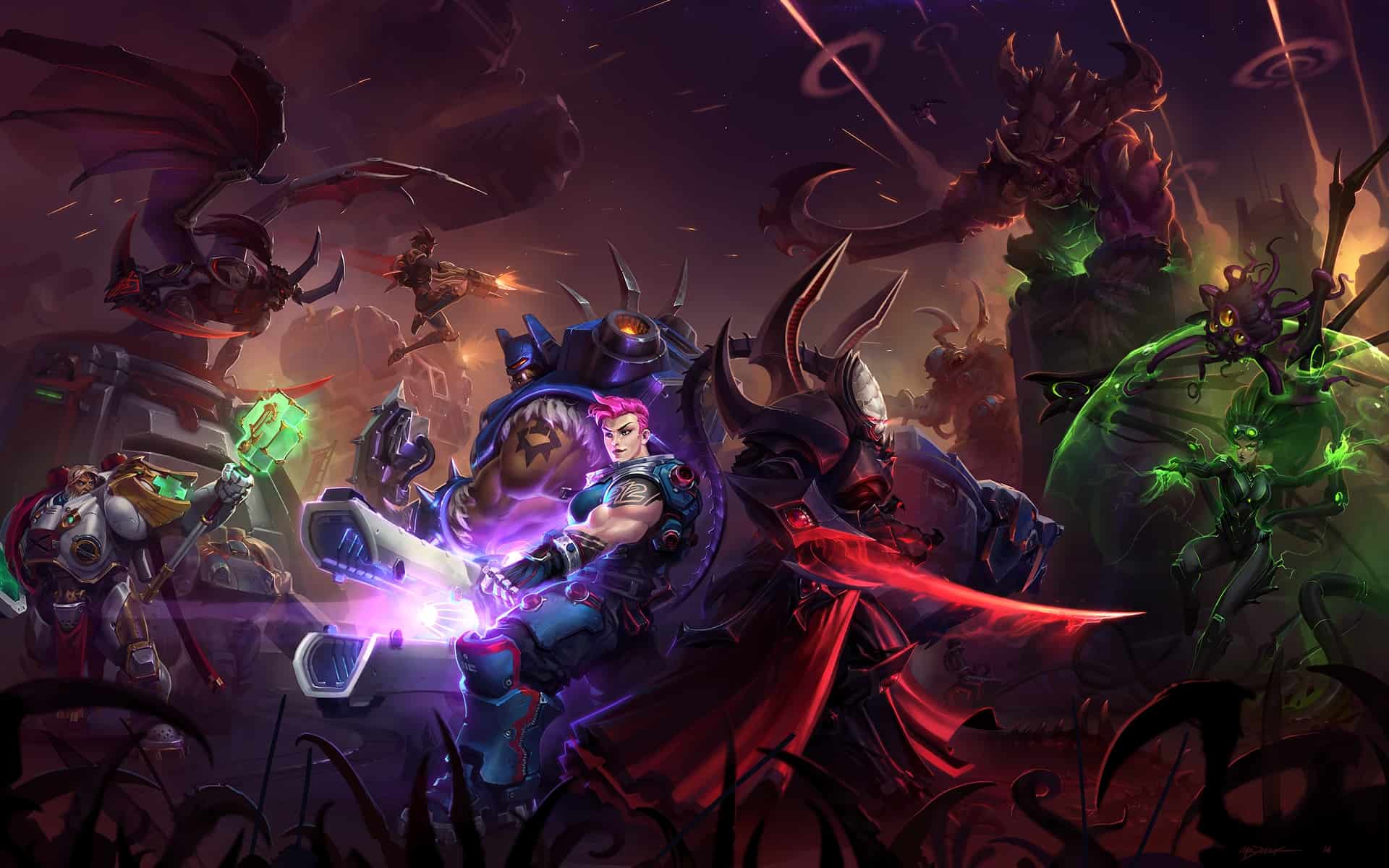
Heroes of the Storm is a five versus five MOBA that has plenty of aspects that set it apart from other games in its genre. It has no item shop, experience is shared by the team (in other words, there is no solo experience; all players on the same team are at the same level and level up together), and there is a plethora of maps, each with its unique objective.
When talking about growing player-power, a talent system replaces the item shop, and each hero has their own set of unique talents to choose from at levels 1, 4, 7, 10, 13, 16, and 20. All heroes have two ultimate abilities to choose from at level 10. You also can mount up out of combat to travel across the map more quickly.
No matter the objective, the main goal of all the maps is to kill the enemy’s core (nexus and titan equivalent), and the core fights back like all the other structures. Minions spawn in waves in each lane to help your team push, and different kinds of mercenary camps are available on each map that, if you capture, will help you push as well.
Check out the cinematic launch trailer below! Trust me; it’s epic.
Heroes of the Storm History
Originally meant to be Defense of the Ancients (DoTA), Blizzard could not claim the title from Valve and instead went with Heroes of the Storm as their MOBA’s title. The game’s “Technical Alpha” phase began in 2014, and its closed Beta began in January 2015. It transitioned to an open Beta in May and finally went live a few weeks later in June.
The game launched with great success and popularity. However, at the end of 2018, Blizzard decided to move many of their Heroes of the Storm developers to other games/projects. This doesn’t mean the game will not continue to be worked on, added to, and improved upon; it just means that it will be done at a slower pace. As they put it, “the cadence will change.“
Heroes of the Storm’s Roles/Classes
The heroes playable in Heroes of the Storm are currently divided into six roles/classes. Those of you familiar with MOBAs will find this categorization familiar, at least for the most part.
Tank
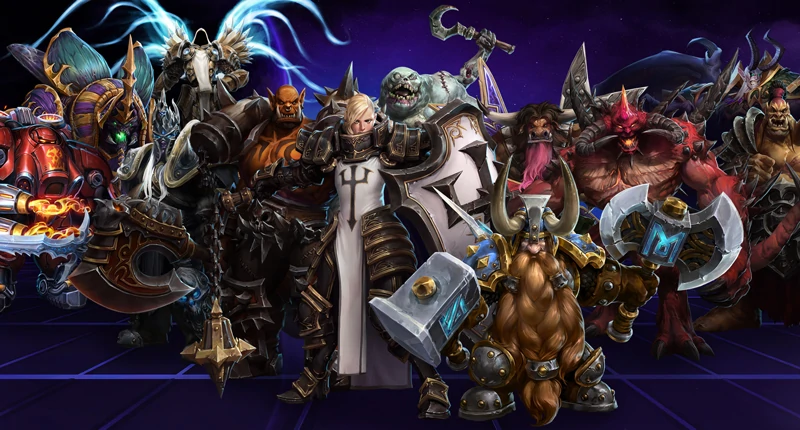
The beefiest of the bunch, tanks can take a lot of punishment and often have the greatest amount of crowd control (cc) among all the roles. These guys aren’t meant to deal all too much damage, but certain ones can be built to do a decent amount with specific talent paths. Some examples of tanks are Diablo, Arthas (my two favorites), Mei, and Blaze.
Bruiser
These guys are the most versatile, as some are tankier than others while some deal more damage than others. Either way, they excel in sustained fights and are often near-unstoppable with a pocket healer to keep them alive. Some tankier examples include Chen and Dehaka, while some more damage-y examples include Thrall and Sonya.
Ranged Assassin
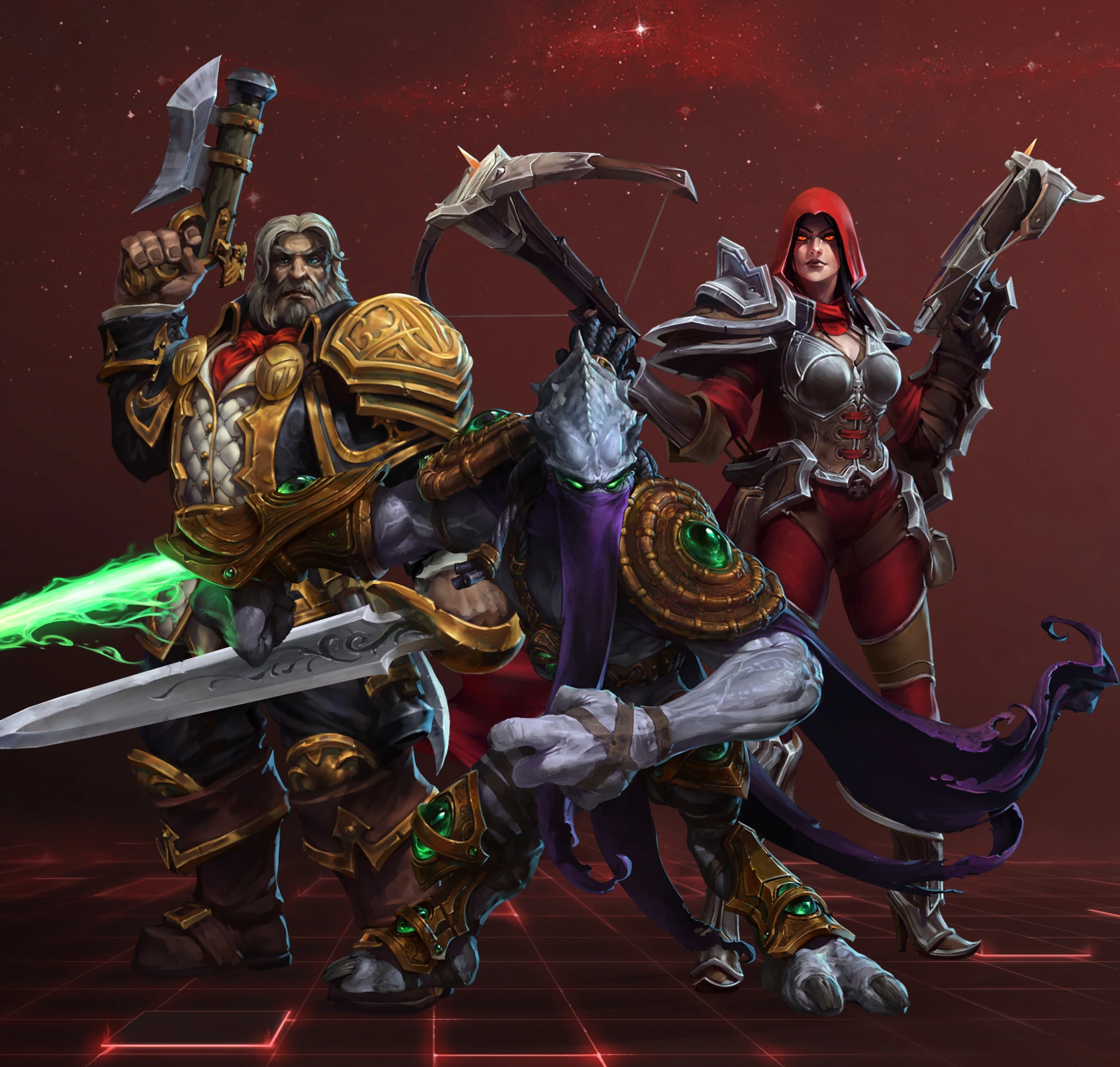
These guys have some of my favorite heroes, both lore-wise and playstyle-wise. Both magic dealers and auto-attackers are mashed into this role, which means that mages and ADCs (attack-damage-carries, i.e., those that primarily deal damage with auto-attacks) are not separated here, at least categorically, as they are in other games.
Either way, they all excel at dealing big damage from afar and are quite easy to kill if you close the distance on them. Some examples of mages include Kael’thas and Li-ming, while some examples of ADCs include Tracer and Raynor.
Melee Assassin
This role is the best role because it has Illidan Stormrage in it. But, in all seriousness, they are the bane of Ranged Assassins, Healers, and Supports, as their main job is to get into the backline and kill the backlines in seconds. Some examples (other than Illidan) include Kerrigan and The Butcher.
Healer
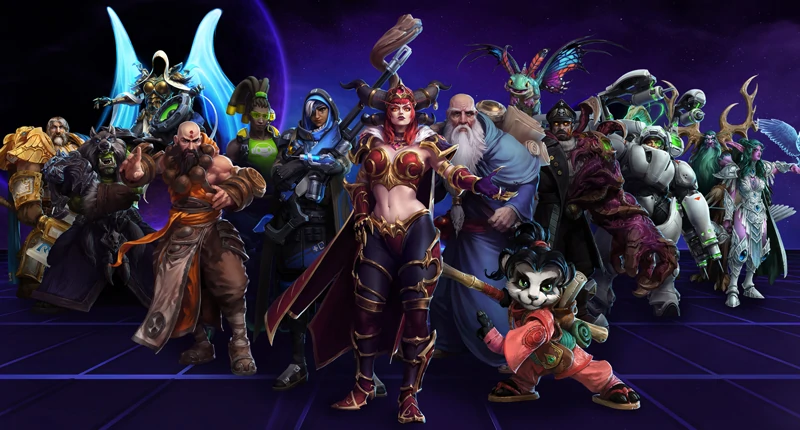
This class does exactly as the name implies: they heal. And this isn’t some minor healing, for they can bring a teammate from half to full health with one spell.
Anyway, believe it or not, this role doesn’t just have ranged characters that need to distance themselves from the fighting. Instead, some healers are melee and can join the fray quite well, such as Rehgar, Kharazim, and Uther.
Support
This class doesn’t have the power to heal to the same effect as Healers but Supports provide—you guessed it—support to their teammates in unique ways, usually through shields, damage mitigation, attack speed buffs, and things of the like. As of writing this article, there are only four heroes classified as Supports: Medivh, Zarya, Abathur, and The Lost Vikings.
While Zarya is the easiest of the bunch (and will be very familiar to those who have played Overwatch), the other three are probably the most difficult heroes to play in the entire game with their incredibly high-skill ceilings. I wouldn’t recommend picking up any of them as a new player, except Zarya, if you’re already familiar with her from Overwatch.
My Own Verdict on Classes
I love all the playstyles of all the classes as each feels unique and contributes something essential to the team. However, Ranged and Melee Assassins are my favorites, but only because dealing big damage is fun. Additionally (and this is something I never thought I’d find myself saying), healing in Heroes of the Storm is super enjoyable. It feels dynamic and impactful, and most importantly, it is not a passive role in the slightest.
The outcome of any given team fight is often in your hands as a healer, and while that can feel like a great deal of pressure, the gratification of saving a teammate’s life is unmatched. Also, some healers even have the power to force a fight by engaging themselves instead of relying on a tank (or a bruiser) to do it.
Fun fact: There used to be a class/role called “Specialist,” which excelled at taking down structures and were phenomenal split-pushers. The likes of Sylvanas and Azmodan (and plenty others) used to fall under this category. However, Blizzard decided to scrap this label and funnel the former Specialist heroes into the six remaining roles.
Talent System
The talent system is the most beginner-friendly aspect of Heroes of the Storm as it replaces the daunting item shop that other MOBAs (League of Legends, SMITE, DoTA 2) have. In total, it adds variety and diversity without being overly difficult and expansive.
As mentioned in the Key Info Up Front section, heroes can choose from a selection of talent points at levels 1, 4, 7, 10, 13, 16, and 20. At level 10, you get to choose one of two ultimate abilities. While many heroes tend to have an optimal talent build (and, by extension, an optimal ultimate), an equal number of heroes can viably take multiple builds, allowing for some refreshing variety. I’ve found that I’m not always taking the same one every time, especially at the level 20 talent point (which is your strongest one after 10), as certain maps/situations demand different talents.
The talent system might seem like a lot to take in at first, but it is much easier to learn and understand compared to an item shop. The fact that every hero has 2 ultimate abilities to choose from is likely one of my favorite things about this game. It fosters a more dynamic atmosphere and allows you to adapt to your game more aptly.
Heroes of the Storm’s Maps
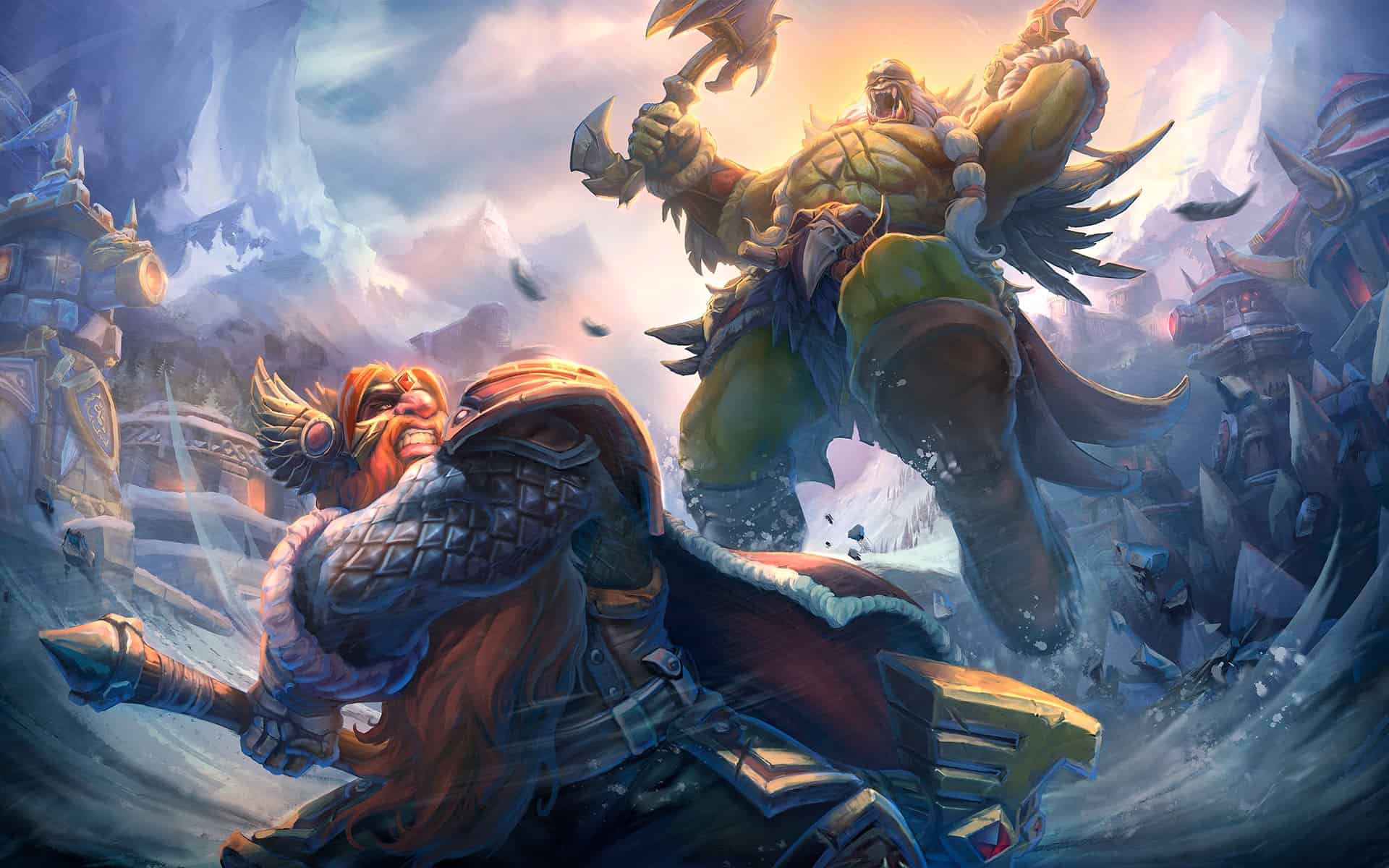
There are a lot of maps (otherwise known as Battlegrounds) in this game, so while I won’t be going too in-depth on them here, I do want to briefly outline them. First thing’s first, the standard maps:
- Hanamura Temple: this is a two-lane map inspired by its Overwatch counterpart. The main objective is a payload that you escort to a designated spot. If successfully escorted, heavy-duty missiles get shot at your opponent’s structures.
- Alterac Pass: this is a three-lane map inspired by the Alterac Valley battleground in World of Warcraft. You fight for either the Horde or the Alliance. The main objective is setting your faction’s prisoners free (the prisoners are NPCs), which will net you three strong cavalry units, one spawning and running down each lane to help you siege.
- Volskaya Foundry: this is a three-lane map inspired by Overwatch’s Volksaya Industries. The main objective here is a capture point (king of the hill style) that, if successfully captured, gives your team a big mech suit to inhabit (one person drives and one person mans the turret).
- Cursed Hollow: this is a three-lane map. The main objective is to collect the tributes that periodically spawn at specific locations. Once a team claims three tributes, the opposing team is cursed, causing their minions to be set at 1 health and their structures to be unable to shoot (except the core).
- Warhead Junction: this is a three-lane map inspired by Starcraft. The main objective is to claim nukes that periodically spawn across the map. Once claimed, you can use them for big damage.
- Braxis Holdout: this is a two-lane map inspired by Starcraft. The main objectives are two points that need to be controlled simultaneously until your bar is filled to 100%. Once that happens, a massive wave of Zerg (the bug dudes from Starcraft) spawn and rush your enemy’s structures.
- Towers of Doom: this is a three-lane map. The main objective is to claim shrines that periodically spawn across the map. Eat claimed shrine will damage the enemy nexus, depending on how many forts your team controls (there’s no way to damage the nexus other than by claiming shrines).
- Infernal Shrines: this is a three-lane map inspired by Diablo. The main objective is to claim the shrines that spawn (by killing 30 little demons), and your team is given a big Punisher as a reward to help you push a lane.
- Battlefield of Eternity: this is a two-lane map inspired by Diablo. You fight for either Heaven or Hell, and the main objective is to assist either your archangel or archdemon (depending on which side you’re on) defeat the other. Whichever entity wins aids its team in pushing a lane.
- Tomb of the Spider Queen: this is a three-lane map. The main objective is to gather gems (which caster minions drop) and turn a certain number of them in to the Spider Queen’s eggs (of which there are two turn-in points). Once that is done, the Spider Queen will send three big spider ladies to help you out (one in each lane)
- Sky Temple: this is a three-lane map. The main objective is to control the temples that periodically activate (there are three temples across the map at fixed locations: north, center, and south). As long as your team controls these temples (at least one member needs to be standing on it to do so, without being contested by the enemy), the temples will shoot beams at the enemy’s structure.
- Garden of Terror: this is a three-lane map. The main objective here has changed a bit over time, but now it functions like Cursed Hollow, just with a different reward. Simply gather three seeds (as opposed to tributes), and three big plant monsters will spawn (one in each lane) to help your team push.
- Dragon Shire: this is a three-lane map. The main objective here is to control both shrines at the same time (one in the bottom lane and one in the top lane) so that you can claim the dragon knight in the middle lane. The dragon knight is controlled by one player and damages everything (more to structures, though).
- Blackheart’s Bay: this is a three-lane map. Here, the main objective is to gather coins (from various things) and turn them into Blackheart. He’ll fire cannonballs at your enemy’s structures once the requested number of coins is given to him.
I favor the three-lane maps over the two-lane maps because the two-lane ones are straightforward to snowball and lose control of, which ultimately results in getting stomped by the enemy team (or you stomping them). The three-lane maps have much more comeback potential and last a little longer, and while I love them all, I think my favorite is Alterac Pass, which is very much thanks to my World of Warcraft bias.
If I can set aside my nostalgia for a moment, my favorite would have to be Blackheart’s Bay, primarily because of the announcer there (and the aesthetic).
Blackheart is your typical undead pirate, and he’s a blast. Cursed Hollow and Dragon Shire are close seconds, probably because they were two of the original maps (along with Blackheart’s Bay, which is an original, too), so I’ve played on them for the most extended amount of time.
There are also ARAM-specific maps (more on the ARAM game mode later in the article), and they are as follows:
- Braxis Outpost
- Industrial District
- Lost Cavern
- Silver City
The ARAM maps are single-lane maps with a couple of mercenary camps (more on those in the following section) and health globes on a respawn timer. They all look different, but none of them play differently at all.
Mercenary Camps
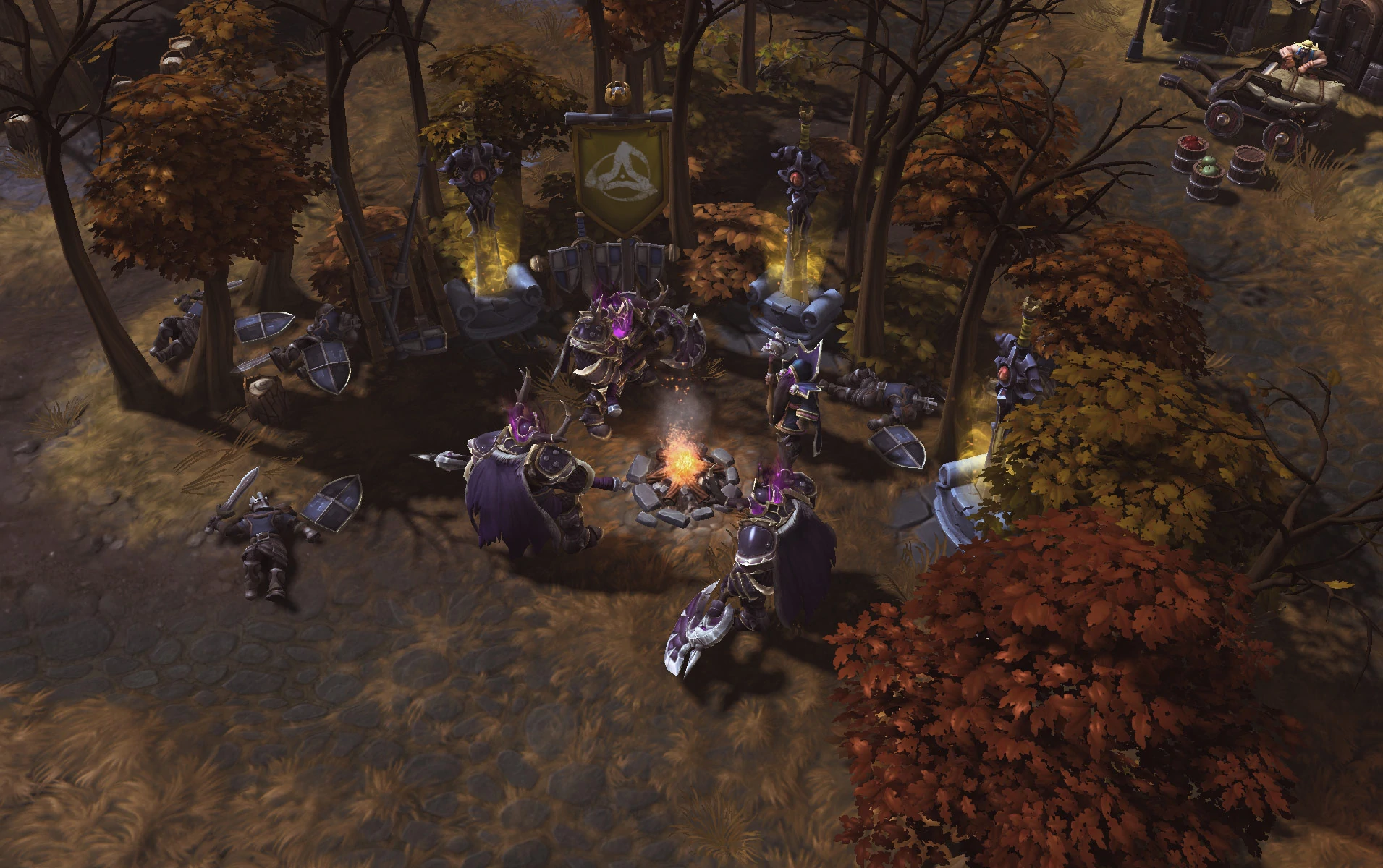
Mercenary camps are strong, neutral units that spawn at predetermined points on each map. Once you defeat them, they will fight for you, pushing the closest lane with the rest of your team’s regular minions. Regarding this, it is important to note one crucial thing: every camp needs to be captured at its capping point. Simply defeating the camp will not make them fight for you.
Rather, once defeated, a capping point will appear that you must stand on for a few seconds. The enemy team can contest this point by having one of their members stand on the point too, and the Mercenary Camp will fight for whichever team successfully captures the point.
With that in mind, there are different mercenary camps across the many maps of Heroes of the Storm; however, they can be broken down into four core groups:
Siege Camp:
This is the most diverse type of Mercenary Camp, but what all of them have in common is their ability to push a lane very well when left alone. They are easy to take down but don’t let them push unchecked because they will shred through your structures. So, be sure to respond to these camps posthaste.
Bruiser Camp:
This camp doesn’t pack as big of a punch as a Siege Camp, at least in terms of siege damage. But, being the bruisers that they are, it takes a little more effort to take them down. As a result, they last longer in lane (especially if left unchecked) and can allow for multiple waves of ordinary minions to pile up in said lane since the towers will be focusing their fire on the Bruiser Camp instead of the minions.
Boss Camp:
This is the biggest and baddest type of Mercenary Camp in the game. While bosses take quite some time to defeat, their powerful pushing abilities are more than worth it since they will usually require the enemy team to send at least two to three members to answer them, if not more. If not, your opponents risk losing many of their structures. The only Boss Camp that doesn’t push a lane is the Headless Horseman on the Towers of Doom Map. Instead, once defeated, he fires four shots at the enemy’s core.
Reward Camp:
As the name implies, this camp gives your team experience and a reward. It does not provide any units to push a lane as the three previous camps do.
Certain types of these mercenary camps have unique abilities that other camps of their type on other maps do not possess. An example of this is the Sapper Camp on the Towers of Doom map. This Siege Camp has strong ranged attacks and a lower health pool, like the other Siege Camps, but when it arrives within a certain proximity from an enemy structure, it will rush said structure and suicide bomb it, dealing heavy damage. No other Siege Camp does this.
Game Modes
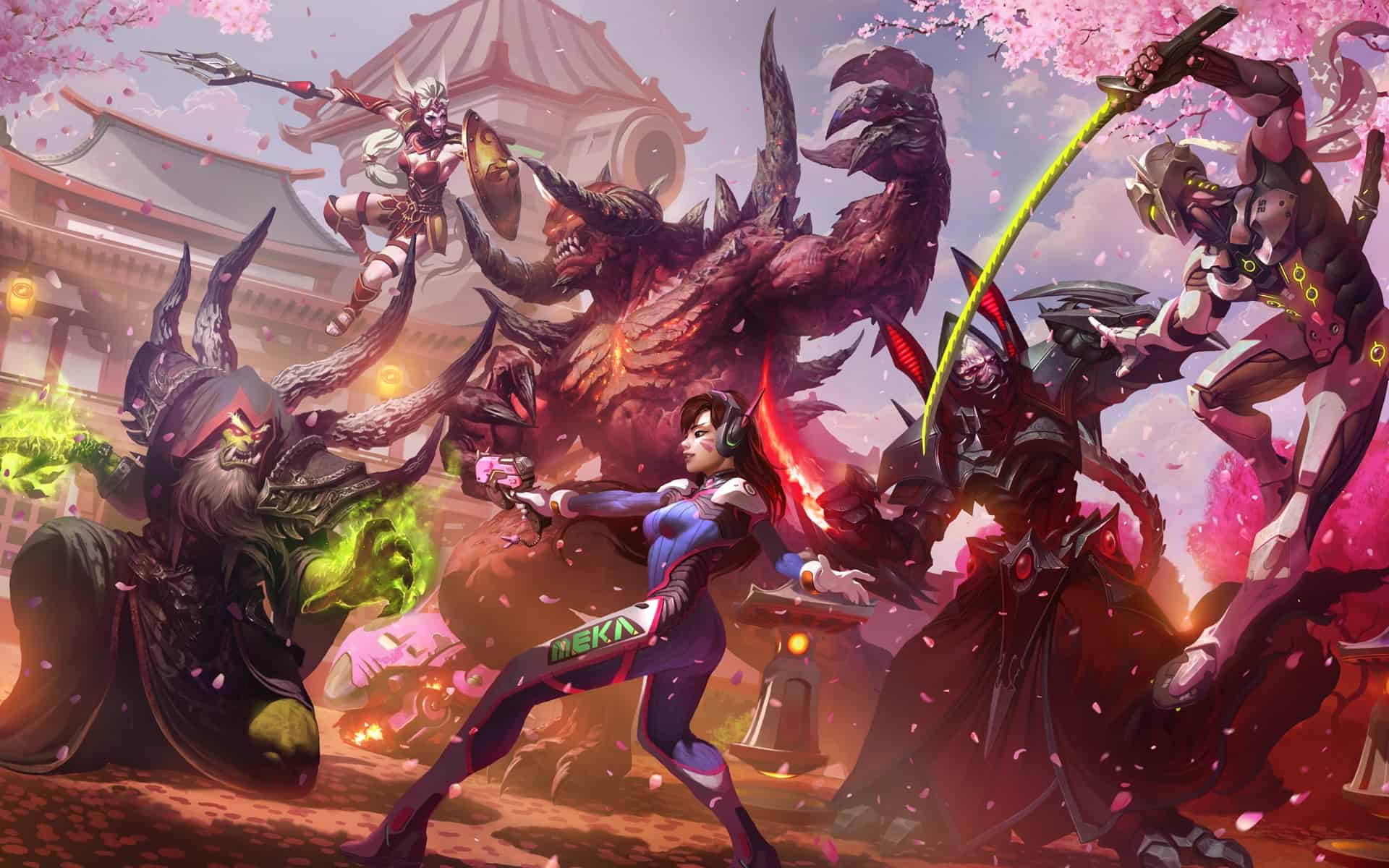
Like any MOBA, there are multiple standard game modes to play. However, Heroes of the Storm doesn’t get too creative with theirs, as their lineup is pretty standard for MOBAs. That said, this also makes sense, considering how many different maps there are.
- Versus A.I.: this is a pretty standard game mode with varying difficulty depending on what level you set the bots as. This is a great place to practice heroes or even just to learn certain maps.
- ARAM (All Random All Mid): I usually dislike ARAM due to the random nature of it, as I’m often paired against a pretty busted team while my team is stuck with five assassins and useless until the twenty-minute mark. That said, Heroes of the Storm does ARAM beautifully, in my opinion, as not only are the games much more fast-paced and shorter, but you get to choose between three heroes at the start, allowing you to strategize who plays what role with your team. Like the ARAM format in other games, you can’t go back to base to regenerate health, but surviving isn’t as hard in Heroes of the Storm due to the healer class. It’s perfectly normal to see people only die a couple of times before the game ends.
- Quick Match: in this game mode, you don’t have to worry about bans or drafting, all the while being able to play on a standard map. Simply pick the hero you want to play and hop into a game.
- Unranked Draft: this is essentially the ranked game mode without the rankings. Some things to keep in mind about drafting, though:
- The map your game will be played on is shown before drafting begins.
- There are three bans. Each team bans two heroes at the start; then, each gets their third ban halfway through the draft.
- Only one person bans (usually the person with the highest rank).
- There is no picking order. Anyone on your team can pick when it’s your team’s turn to pick, so it may pay to talk out a picking order with your team beforehand.
- Ranked: the draft in Ranked functions exactly as it does in Unranked Draft; however, it is essential to note that there is a map rotation in Ranked. In other words, only certain maps are played in Ranked during a given season, and some are left out. On the Ranked play screen, on the bottom left, there is a “Battlegrounds” icon that you can click to see which maps are active in Ranked.
There is no rotating “special” game mode, though you can create custom games if you want to duke it out with your friends.
Tips for Players New to MOBAs
- Stepping into the range of towers, forts keeps, or the core by yourself will cause them to target you. As with other MOBAs, structure damage hurts a lot early game, so be careful.
- Attacking enemy heroes while in range of a fort or keep will cause that structure to target you. Interestingly enough, this didn’t use to be the case as the forts and keeps wouldn’t target enemy heroes who attacked allied heroes. Thankfully, they changed that.
- Until you’re comfortable with the game, don’t go out of your way to learn all the heroes and their talents. That can be a bit overwhelming. Instead, just experience the game naturally.
- Quick Match is a great place to start. Don’t jump straight into Unranked Draft or, God forbid, Ranked.
Tips for Players Experienced with MOBAs (but also new players)

- Last hitting minions does not matter, so don’t worry about your cs (creep score). All you need to do is clear the wave and gather the experience it drops.
- Sometimes soaking experience is better than grouping at the first and/or second objective (especially on the maps that last longer). You might lose a fort as a result of losing the objective, but you’ll have gained more experience than the enemy team, setting your team ahead for the later, more influential objectives.
- Don’t expect to be able to solo carry your games. Considering how team-focused Heroes of the Storm is, it is tough to do so, so make sure you’re playing for the team as often as you can.
- Since there are mounts, teams can rotate much more quickly than they can otherwise, so if you see enemies disappear from vision, be wary.
- If you’re coming from SMITE, then the fact that the core (titan equivalent) attacks enemies should be familiar to you. The core has unique defensive abilities as well, depending on which map you’re on.
- There are no wards in Heroes of the Storm. Some heroes can talent into wards (some even have a moving ward built into their kit, like Lunara), but wards are not something you can buy off the item shop, as there is no item shop.
- There is no laning phase, but that does not mean there isn’t laning etiquette. Typically, in a two-lane map, there will be a solo laner (bruisers, more often than not) while the other four members go to the other lane. In a three-lane map, there will be two solo laners, one in each side lane, and the other three members will go mid. As the game progresses and objectives spawn, everyone, rotates according to the game plan (whatever that may be). Rotations are the most crucial aspect here, so generally speaking, follow your team.
Overall Tips
- Don’t be intimidated by the number of maps. While there is undoubtedly variety, they all are generally the same in terms of a primary objective that gives your team a significant buff. Plus, the announcer will let you know when an objective is coming up within each game, so don’t worry too much about forgetting which map has which objective.
- Don’t underestimate the power of mercenary camps. The best time to capture them is right before an objective spawns.
- While you’re still getting used to the game, stick to one hero and learn them inside and out. Branching off to other heroes, while doable, is even more of a challenge in Heroes of the Storm because of the talent system, making it even harder to move from one hero to the next. The lack of an item shop removes that form of continuity offered by an item shop, for if you wanted to swap from, say, one mage to another mage, you know you’ll generally be building similar items. I mean it when I say each hero is unique.
- Admittedly, this is more of a big-brain, competitive tip, but don’t always rush to pick your talent points as soon as they become available to you. Sometimes, it pays to be patient and see which talents certain enemies of yours pick. This will allow you to counter them, if possible, and is especially true at level 10 when picking ultimate abilities.
- Always make sure all the lanes on the map are covered to maximize experience gains. That’s the best way to get your team ahead, so if you see an open, uncovered lane, go to it to soak up the experience.
- Don’t pick a hero because they’re “meta.” Pick a hero because you like the character. You’ll enjoy the game much more. Take me, for example. Illidan Stormrage is my favorite character in the World of Warcraft universe, and he was the first hero I picked up. Nothing brought me greater joy than yelling “YOU ARE NOT PREPARED” every time I used my ultimate ability, even if I happened to be losing.
Below is Blizzard’s gameplay trailer for a quick overview of the game. Keep in mind, though, that they mention the “Specialist” class, which is no longer in the game:
FAQs
Question: Is Heroes of the Storm worth playing?
Answer: Absolutely. This is especially true if you want to take a break from other games like League of Legends or SMITE but still want that MOBA feels. Heroes of the Storm is by no means dead, as it still has a dedicated player base and is unique from other MOBAs in more ways than one. This is a game to try, particularly if you’re already a fan of Blizzard games and want to see your favorite characters more up close and personal.
Question: Is Heroes of the Storm beginner-friendly?
Answer: As far as MOBAs go (which are generally known for having steep learning curves), I would certainly consider Heroes of the Storm beginner-friendly.
Yes, there are many heroes (but fewer compared to other MOBAs), and there are many maps (though the skeletons of the maps are quite similar due to their “do this objective” formula), but it truly isn’t all that overwhelming. On top of this, the talent system is far simpler and easier to get used to than a massive item shop (like we see in League of Legends and SMITE, for example), which is a huge burden off of a newcomer’s shoulders.
Question: Can you solo carry in Heroes of the Storm?
Answer: While doable, Solo carrying in Heroes of the Storm is not reliable. At all. Unlike other MOBAs, you don’t gain solo experience; you level up with the rest of your team, therefore removing much of the power from the individual. Granted, some heroes have the potential to carry but said the potential is nowhere near as prominent as it is in something like DoTA 2 or League of Legends.
Heroes of the Storm Overview: Conclusion
If you have experience with other MOBAs or any other Blizzard game (World of Warcraft, Diablo, Starcraft, Overwatch), I would highly recommend you give Heroes of the Storm a try. It looks great; it feels great to play and is highly dynamic due to the variety of heroes and maps.
The games are much quicker than other MOBAs, so time is of no concern since you can easily play two games in the time it would take to play, say, one League of Legends game.
Even though Blizzard is “changing their cadence,” Heroes of the Storm is still tuned and patched frequently and is far from being abandoned by the developers. This game frequently feels like a bit of a dark horse within the MOBA genre, and I firmly believe it’s worth trying. See you in the Nexus!
